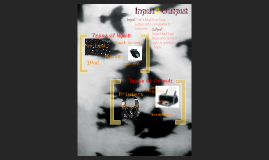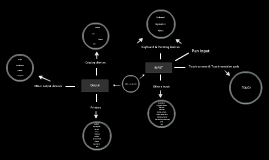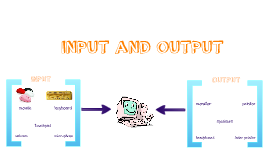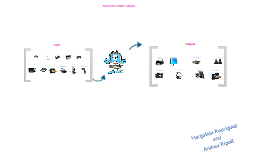Input Output Model Template
Transcript: Components of the Model Inputs: Types and Sources Understanding the key components of the Input Output Model is essential for effective data analysis. This section delves into the inputs, outputs, and processes that form the foundation of this model, revealing how each element contributes to data transformation and insights. Inputs are the fundamental data elements extracted from various sources, including databases, APIs, and user inputs. Typical input types include quantitative data, qualitative data, and metadata, which are critical for generating meaningful outputs in the model. Outputs: Expected Results Processes: Transformation Mechanisms Processes involve the methodologies and algorithms used to transform inputs into outputs. These may include statistical analyses, computational algorithms, and data processing techniques, all of which are crucial for accurate modeling and predictive analytics. Outputs are the results generated from the transformation of inputs, typically in the form of reports, visualizations, or actionable insights. Understanding expected results helps in evaluating the effectiveness of the model and guiding business decisions. Defining the Input Output Model Introduction to Input Output Model The Input Output Model is a systematic representation of interdependencies between economic sectors or components. It maps how various inputs contribute to outputs, providing insights into production processes and economic circulation. Business Decision Making The Input Output Model is a fundamental framework that illustrates the relationships between different sectors of an economy or system. It highlights how inputs are transformed into outputs, enabling a comprehensive analysis of data flows. Input Output Model Template The Input Output Model aids businesses in analyzing production processes and identifying key input requirements. By providing insights into the interactions between different sectors, organizations can make informed decisions to optimize resource allocation and enhance operational efficiency. Economic Analysis Applications of the Model A Brief Historical Overview This model supports economists in understanding inter-industry relationships and impacts of economic policies. It provides a framework for examining how changes in one sector affect others, offering insights for policy evaluation and economic forecasting. The Input Output Model serves as a pivotal framework for understanding various real-world applications, particularly in business decision-making, economic analysis, and environmental assessments. Its systematic approach provides valuable insights for stakeholders in diverse fields. Significance in Data Analysis Environmental Impact Assessment The Input Output Model plays a crucial role in assessing environmental impacts of various industries. By evaluating resource consumption and emissions, it helps in creating sustainable practices and informing regulatory decisions aimed at reducing ecological footprints. The Input Output Model was developed in the 1930s by economist Wassily Leontief, who used it to assess economic interactions. This model has evolved, influencing economic policy and systems analysis worldwide over the decades. Understanding the Input Output Model is crucial for analyzing economic systems, aiding in decision-making, resource allocation, and forecasting. Its application spans various fields, including economics, environmental studies, and business strategy. Understanding the Dynamics of Data Transformation Continual Monitoring Practices To address data quality and model accuracy, continual monitoring practices must be enacted. These involve regular reviews, updates, and audits of the model to ensure it adapts to changes in data inputs and external conditions. Flowcharts and Diagrams Case Studies showcasing Data Flows Flowcharts and diagrams are essential for mapping out data processes visually. They help stakeholders understand the sequence of operations and the relationships between various components of a system, thus improving communication and collaboration. Real-world case studies highlight the application of data flow models across industries such as finance and healthcare. These examples demonstrate how visualization techniques can enhance operational efficiency and decision-making through clear representation of data interactions. Integrating User Feedback Data Quality Issues Future Trends in Data Modeling Visualization Techniques Incorporating user feedback helps identify practical issues in data models. Engaging end-users allows for insights into real-world applications and adjustments needed, ensuring models remain relevant and effective. Data quality is critical to accurate modeling. Problems such as missing data, incorrect entries, and inconsistencies can lead to faulty conclusions. Implementing robust data validation and cleansing procedures is essential to ensure reliable outputs. The future of data modeling points towards enhanced

















